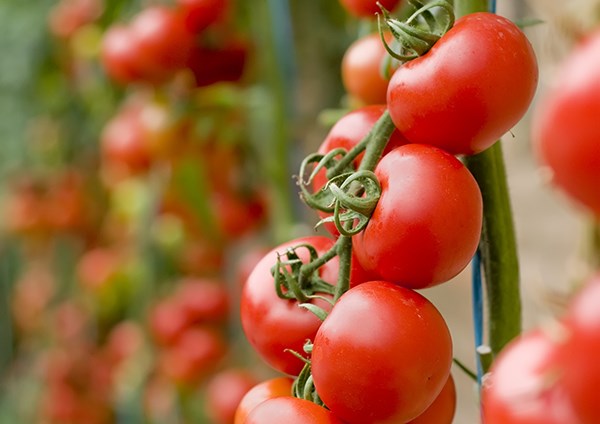The veggie garden is exploding this month with a riot of greens, lettuces, spinach, spring onions, radish and strawberries. It is a wonderful time to garden.
Want to harvest throughout the summer? Remember to succession-sow your seeds. When early crops finish, plant seeds every two to three weeks for a staggered and continual harvest. Good choices now are carrots, beets, radish, salad greens, bush beans and dill. When choosing salad green seeds at this time of the year look for heat resistant varieties that won’t bolt or go to seed too quickly in warm weather.
It’s hard to play favourites in the vegetable world, but one of the most anticipated and purchased vegetables in North America is the wonderful tomato plant.
In the middle of winter when we troll the produce isles of the grocery store and stare at the watery, insipid facsimiles of tomatoes that sit on the shelves from faraway places; it is summertime tomatoes that we dream of. Nothing beats a tomato ripened in the sun, straight out of your own garden. The taste is irreplaceable and it’s the reason we grow our own vegetables.
Good taste doesn’t come easy. Delicious, homegrown fruit comes with a cost at times, as tomato plants are susceptible to early and late blight. This is the time of the year when you may notice early blight on your tomatoes.
Early blight on tomato plants is caused by a fungus, alternaria solani, which overwinters in the soil or is spread by spores in wet weather. It may not completely kill the plant, but it will weaken it, affect the soil and result in pathetic yields.
Early blight can start with a curling of the leaf, or dark concentric spots ( brown or black ) on the lower leaves and stems. It is often marked by rings. The lower leaves of the plant will turn yellow and drop.
One of the easiest ways to control early blight is prevention. Try rotating your crops every year and don’t plant the same crop in the same place. Spores can be dormant in the soil for as long as a year and sometimes for several years.
Try planting grafted tomato plants or disease-resistant hybrids. You can also try giving your tomato plants extra space (planting more than 24 inches apart) to let air circulate and keep leaves dry. Water the soil and not the foliage of the plants, and use soaker hoses to bottom-water as opposed to an overhead oscillating sprinkler. If you find evidence of early blight, make sure to remove and destroy the affected leaves; if you catch blight in the early stages, you can save the plant. It’s a good idea to add a layer of mulch at the base of each tomato plant and soil, as the fungus is carried in the soil.
If you catch the blight in the early stages you can try using an organic copper spray or a biological fungicide. You can alternate the two, but don’t spray them both in the same week. When using the copper spray, spray early in the morning as it’s not great for our friends the bees.
Tomatoes can be work, but the harvest is oh so sweet.



